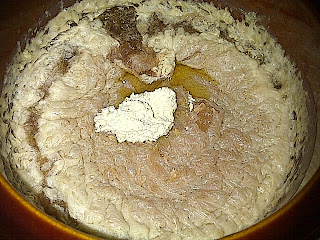Information about cocoa butter and shea butter
Cocoa butter and shea butter are two of nature's richest moisturizers, all-natural beauty products that can do wonders for your skin. Each has been used for centuries as a beauty product, and both are commonly found in creams and lotions. However, there are notable differences between the two that can affect your skin for the better or for the worse.
ORIGIN
Both shea and cocoa are naturally occuring substances. Shea butter is also known as karite butter. It's made from the nuts of the karite tree found in West and Central Africa. Shea butter is sometimes called "women's gold," because its harvest and production creates jobs for many African women. Cocoa butter is extracted from cacao seeds, also known as cocoa beans. It's native to the Americas and is a traditional moisturizer in Mesoamerica and the Caribbean.
MOISTURIZING QUALITIES
Cocoa butter and shea butter are similarly prized as moisturizers. Both contain fatty acids, which improve skin moisture retention and elasticity. Both are effective in easing skin problems such as eczema or psoriasis. Most people agree that cocoa butter's smell is very pleasant, and some use it for aromatherapy; shea butter's fragrance, on the other hand, is sometimes described as off-putting or even stinky.
SKIN REPAIR AND HEALTH
Cocoa butter contains cocoa mass polyphenol (CMP), which helps ease dermatitis or rashes. CMP may also inhibit the growth of cancerous cells and tumors.
Shea is a good source of vitamins A and E, which strengthen your skin and help it repair damage. A 2009 study found that the caffeic acid in shea butter reduced the damaging effects of UV radiation. In addition, shea butter contains cinnamic acid: a 2010 study found that it could repel both inflammation and tumors.
ACNE, STRETCH MARKS AND SCARS
For acne-prone skin, shea butter is a wiser choice than cocoa butter. Cocoa butter will clog your pores, according to a report by Beneficial Botanicals. Shea butter is non-comedogenic, meaning your pores will stay clear. It may also help reduce the appearance of acne scars, because its antimicrobial properties can fight off infections.
Cocoa butter has traditionally been recommended to pregnant women who have stretch marks. However, a 2008 study found that it was no more effective on stretch marks than a placebo lotion.







.jpg)




















